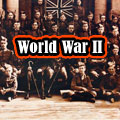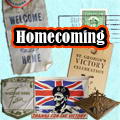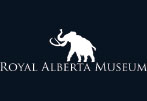Women Join The Forces
(adapted from Canada at War Nov-Dec, 1944 & June, 1943)

Canadian women were greatly involved in the war effort. Most women made the greatest contribution to the home front even though many also served overseas. One in every four women in the Canadian population was employed in war-related industries and thousands of others volunteered in war service centers. In fact, more than 41,000 women between the ages of 18 and 45 joined the Women’s Military Service.
Air Force
The Women’s Division of the Royal Canadian Air Force (R.C.A.F.W.D.) was created in February 1942 (The Women's Division was originally called the Canadian Women's Auxiliary Air Force, forming in July 1941). Women’s involvement in the air force evolved from auxiliary to core positions. Many women became an integral part of the air force and some even replaced men on almost all ground crew duties. In November 1944, enlistments reached over 16,800 with more than 1,300 women working in the service overseas.

Enlisted primarily to assist in the gigantic training plan of the R.C.A.F., women were trained in more than 40 different trades. These include, but are not restricted to positions as office clerks, aircraft assistants, drivers, telephone operators, parachute riggers, timekeepers for student pilots, photographers and, meteorological observers and coders. Women were on duty in control towers and in secret operation rooms, keeping watch over shipping and aircraft movements along coastal defense areas.

Army
Women contributed most to the army as it was the largest of women’s services. The Canadian Women’s Army Corps (C.W.A.C.) was established in 1941 and enlistment in the body grew as high as 19,000. More than 1,300 women served overseas and in a number of different contingents located in Great Britain, France, Belgium, Netherlands and, Italy. There were 50 types of employment in which women worked. These include positions such as general clerks, stenographers, cooks, drivers, draughtswomen, wireless operators, cipher clerks etc. Having worked in these positions, army women rose to become C.W.A.C. officers and, as a result of rank reorganization in May 1943, women assumed duties equivalent to their male counterparts. This was a significant milestone as it was the first time in history that an army woman achieved equal status with army men.
Navy

The Women’s Royal Canadian Naval Service (W.R.C.N.S.) was established in 1942. More than 5,600 women were enlisted, with new recruits invited on a monthly basis. The presence of women in the navy, as with all other corps’s, challenged the status quo. No longer was it the norm to find a wren wearing trousers working on a signal bridge or at a naval base. Once considered a man’s area, the naval service evolved to employ both men and, women. Women too worked as Wrens. They served in over 50 establishments in Canada, Great Britain, Newfoundland and, the United States. Overseas women served with the Canadian Naval Mission and also participated in navy shows.

Medical Services
More than 3,750 women were serving as nurses or doctors in the armed forces by November 1944. There were 282 women enlisted in the Royal Canadian Nursing Service, 3,041 in the Royal Canadian Army Medical Corps and 401 female nurses in the Royal Canadian Air Force. There were even 58 female doctors in the service – seven in the navy, 40 in the army and, 11 in the air force.
 |
 |
 |
 |
 |
 |
 |
 |








